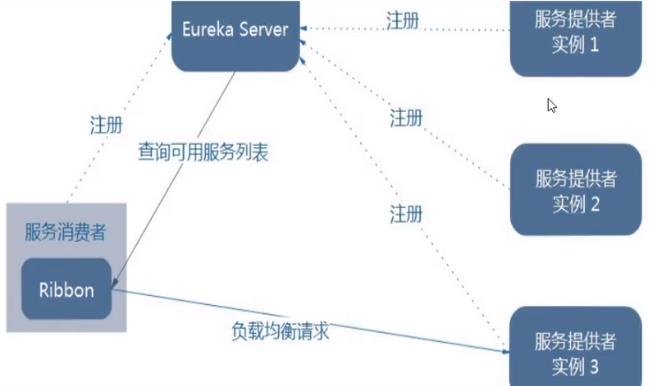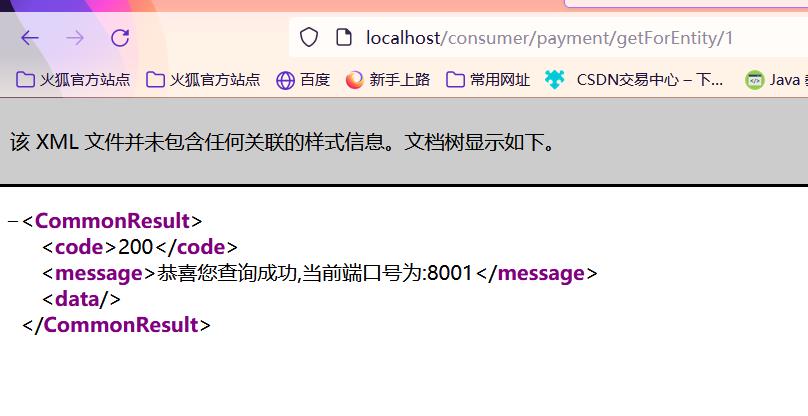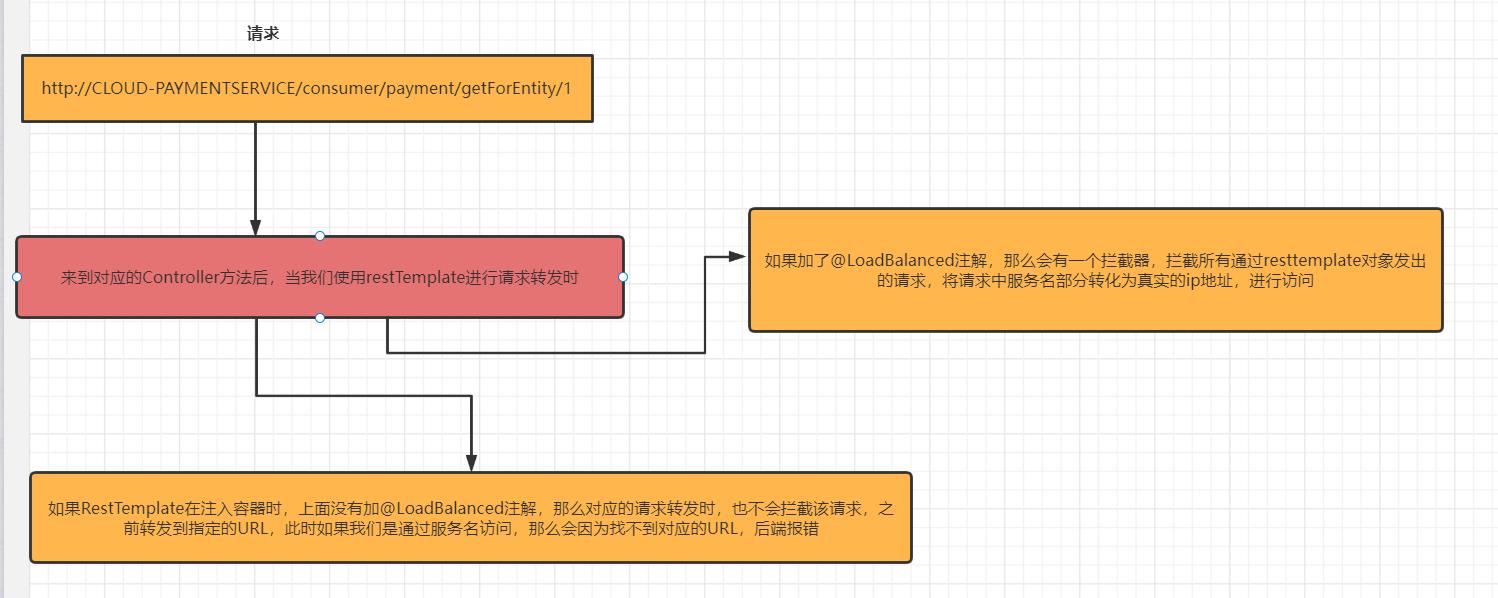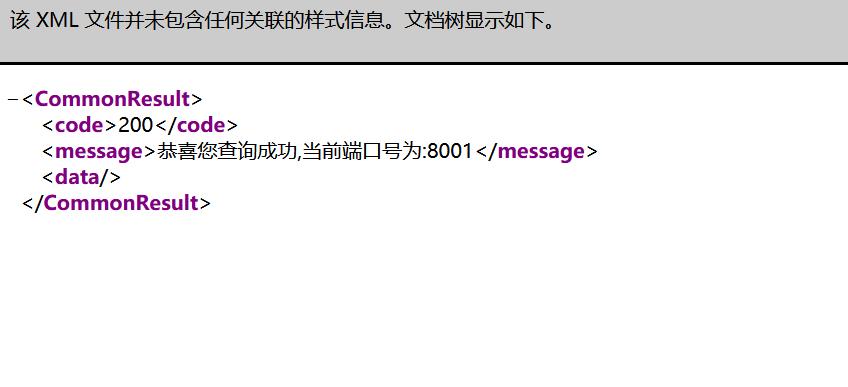SpringCloud集成Ribbon
Posted 大忽悠爱忽悠
tags:
篇首语:本文由小常识网(cha138.com)小编为大家整理,主要介绍了SpringCloud集成Ribbon相关的知识,希望对你有一定的参考价值。
SpringCloud集成Ribbon
Ribbon入门介绍
Spring Cloud Ribbon是基于Netflix Ribbon实现的一套客户端负载均衡的工具。
简单的说,Ribbon是Netflix发布的开源项目,主要功能是提供客户端的软件负载均衡算法和服务调用。Ribbon客户端组件提供一系列完善的配置项如连接超时,重试等。
简单的说,就是在配置文件中列出Load Balancer(简称LB)后面所有的机器,Ribbon会自动的帮助你基于某种规则(如简单轮询,随机连接等)去连接这些机器。我们很容易使用Ribbon实现自定义的负载均衡算法。
Ribbon目前也进入维护模式。
Ribbon未来可能被Spring Cloud LoadBalacer替代。
LB负载均衡(Load Balance)是什么
简单的说就是将用户的请求平摊的分配到多个服务上,从而达到系统的HA (高可用)。
常见的负载均衡有软件nginx,LVS,硬件F5等。
Ribbon本地负载均衡客户端VS Nginx服务端负载均衡区别
Nginx是服务器负载均衡,客户端所有请求都会交给nginx,然后由nginx实现转发请求。即负载均衡是由服务端实现的。
Ribbon本地负载均衡,在调用微服务接口时候,会在注册中心上获取注册信息服务列表之后缓存到JVM本地,从而在本地实现RPC远程服务调用技术。
集中式LB
即在服务的消费方和提供方之间使用独立的LB设施(可以是硬件,如F5, 也可以是软件,如nginx),由该设施负责把访问请求通过某种策略转发至服务的提供方;
Nignx属于集中式LB
进程内LB
将LB逻辑集成到消费方,消费方从服务注册中心获知有哪些地址可用,然后自己再从这些地址中选择出一个合适的服务器。
Ribbon就属于进程内LB,它只是一个类库,集成于消费方进程,消费方通过它来获取到服务提供方的地址。
一句话
负载均衡 + RestTemplate调用
Ribbon的负载均衡和Rest调用
架构说明
总结:Ribbon其实就是一个软负载均衡的客户端组件,它可以和其他所需请求的客户端结合使用,和Eureka结合只是其中的一个实例。

Ribbon在工作时分成两步:
- 第一步先选择EurekaServer ,它优先选择在同一个区域内负载较少的server。
- 第二步再根据用户指定的策略,在从server取到的服务注册列表中选择一个地址。
其中Ribbon提供了多种策略:比如轮询、随机和根据响应时间加权。
POM
先前工程项目没有引入spring-cloud-starter-ribbon也可以使用ribbon。
<dependency>
<groupld>org.springframework.cloud</groupld>
<artifactld>spring-cloud-starter-netflix-ribbon</artifactid>
</dependency>
这是因为spring-cloud-starter-netflix-eureka-client自带了spring-cloud-starter-ribbon引用。
RestTemplate探究
getForObject() / getForEntity() - GET请求方法
getForObject():返回对象为响应体中数据转化成的对象,基本上可以理解为Json。
getForEntity():返回对象为ResponseEntity对象,包含了响应中的一些重要信息,比如响应头、响应状态码、响应体等。
postForObject() / postForEntity() - POST请求方法
@RestController
@Slf4j
public class OrderController
{
@Autowired
private RestTemplate restTemplate;
private static final String PAYMENT_URL="http://CLOUD-PAYMENT-SERVICE";
@GetMapping("/consumer/payment/getForEntity/{id}")
public CommonResult<Payment> getPayment2(@PathVariable("id") Long id)
{
//返回的请求体内容,封面为CommonResult对象
ResponseEntity<CommonResult> entity = restTemplate.getForEntity(PAYMENT_URL+"/payment/get/"+id,CommonResult.class);
//判断状态码
if(entity.getStatusCode().is2xxSuccessful()){
log.info(entity.getStatusCode()+" "+entity.getStatusCodeValue());
//返回请求体里面的内容
return entity.getBody();//getForObject()
}else{
return new CommonResult<>(444,"操作失败");
}
}
}
将RestTemplate对象注入容器中,并给予其负载均衡的能力
@Configuration
public class ApplicationContextConfig
{
@Bean
@LoadBalanced//使用@LoadBalanced注解赋予RestTemplate负载均衡的能力
public RestTemplate getRestTemplate()
{
return new RestTemplate();
}
}
Ribbon默认自带的负载规则
lRule:根据特定算法中从服务列表中选取一个要访问的服务

- RoundRobinRule 轮询
- RandomRule 随机
- RetryRule 先按照RoundRobinRule的策略获取服务,如果获取服务失败则在指定时间内会进行重试
- WeightedResponseTimeRule对RoundRobinRule的扩展,响应速度越快的实例选择权重越大,越容易被选择
- BestAvailableRule 会先过滤掉由于多次访问故障而处于断路器跳闸状态的服务,然后选择一个并发量最小的服务
- AvailabilityFilteringRule 先过滤掉故障实例,再选择并发较小的实例
- ZoneAvoidanceRule 默认规则,复合判断server所在区域的性能和server的可用性选择服务器
Ribbon负载规则替换
1.修改cloud-consumer-order80
2.注意配置细节
官方文档明确给出了警告:
这个自定义配置类不能放在@ComponentScan所扫描的当前包下以及子包下,
否则我们自定义的这个配置类就会被所有的Ribbon客户端所共享,达不到特殊化定制的目的了。
(也就是说不要将Ribbon配置类与主启动类同包)
3.新建package - com.myrule
4.在com.myrule下新建MySelfRule规则类
这里既然MySelfRule自定义轮询算法规则类已经放到主启动类的包外了,那么@Configuration注解也就失去了效果,加不加都可以
//@Configuration
public class MySelfRule
{
//@Bean
public IRule myRule(){
return new RandomRule();
}
}
5.主启动类添加@RibbonClient
@SpringBootApplication
@EnableEurekaClient
//指定什么样的Ribbon客户端使用我们指定的轮询算法
@RibbonClient(name = "CLOUD-PAYMENT-SERVICE", configuration = MySelfRule.class)
public class OrderMain
{
public static void main(String[] args)
{
SpringApplication.run(OrderMain.class,args);
}
}
6.测试
开启cloud-eureka-server7001,cloud-consumer-order80,cloud-provider-payment8001,cloud-provider-payment8002
浏览器-输入http://localhost/consumer/payment/getForEntity/1
返回结果中的serverPort在8001与8002两种间反复横跳。

原理简析
@LoadBalanced注解的作用

上面如果我们自定义了一个轮询算法,并且选中指定的服务集群使用该算法进行轮询操作,那么首先必须将该自定义轮询类,放到不能被启动类扫描的包下,否则一旦被放入容器中后,会覆盖掉默认的轮询算法,那么所有的不同的服务集群,都会使用我们自定义的轮询算法
然后在启动类上加上注解标识,指定某一个服务集群,使用我们自定义的轮询算法
参考文章
Ribbon实现客户端负载均衡
关于ribbonClient配置的一个坑
springcloud切换负载均衡算法不生效,@RibbonClient与@LoadBalancerClient使用方法
Ribbon默认负载轮询算法原理
默认负载轮训算法: rest接口第几次请求数 % 服务器集群总数量 = 实际调用服务器位置下标,每次服务重启动后rest接口计数从1开始。
List<Servicelnstance> instances = discoveryClient.getInstances("CLOUD-PAYMENT-SERVICE");
restemplate发出的请求,获取到请求里面包含的服务名,然后根据服务名,找到对应的服务集群
如:
- List [0] instances = 127.0.0.1:8002
- List [1] instances = 127.0.0.1:8001
8001+ 8002组合成为集群,它们共计2台机器,集群总数为2,按照轮询算法原理:
- 当总请求数为1时:1%2=1对应下标位置为1,则获得服务地址为127.0.0.1:8001
- 当总请求数位2时:2%2=О对应下标位置为0,则获得服务地址为127.0.0.1:8002
- 当总请求数位3时:3%2=1对应下标位置为1,则获得服务地址为127.0.0.1:8001
- 当总请求数位4时:4%2=О对应下标位置为0,则获得服务地址为127.0.0.1:8002
- 如此类推…
RoundRobinRule源码分析
public interface IRule{
/*
* choose one alive server from lb.allServers or
* lb.upServers according to key
*
* @return choosen Server object. NULL is returned if none
* server is available
*/
//重点关注这方法
public Server choose(Object key);
public void setLoadBalancer(ILoadBalancer lb);
public ILoadBalancer getLoadBalancer();
}
查到该接口的一个自实现类,也是默认使用的轮询算法类
public class RoundRobinRule extends AbstractLoadBalancerRule {
private AtomicInteger nextServerCyclicCounter;
private static final boolean AVAILABLE_ONLY_SERVERS = true;
private static final boolean ALL_SERVERS = false;
private static Logger log = LoggerFactory.getLogger(RoundRobinRule.class);
public RoundRobinRule() {
nextServerCyclicCounter = new AtomicInteger(0);
}
public RoundRobinRule(ILoadBalancer lb) {
this();
setLoadBalancer(lb);
}
//重点关注这方法。
public Server choose(ILoadBalancer lb, Object key) {
if (lb == null) {
log.warn("no load balancer");
return null;
}
Server server = null;
int count = 0;
while (server == null && count++ < 10) {
//获取当前服务集群里面所有上线的可用服务
List<Server> reachableServers = lb.getReachableServers();
//获取当前服务集群里面的所有服务
List<Server> allServers = lb.getAllServers();
int upCount = reachableServers.size();
int serverCount = allServers.size();
//没有上线的服务,或者没有可用的服务,显示警告信息
if ((upCount == 0) || (serverCount == 0)) {
log.warn("No up servers available from load balancer: " + lb);
return null;
}
//获得当前需要调用的服务的索引
int nextServerIndex = incrementAndGetModulo(serverCount);
//从服务列表中根据索引取出对应的服务
server = allServers.get(nextServerIndex);
if (server == null) {
/* Transient. */
Thread.yield();
continue;
}
if (server.isAlive() && (server.isReadyToServe())) {
return (server);
}
// Next.
server = null;
}
if (count >= 10) {
log.warn("No available alive servers after 10 tries from load balancer: "
+ lb);
}
return server;
}
/**
* Inspired by the implementation of {@link AtomicInteger#incrementAndGet()}.
*
* @param modulo The modulo to bound the value of the counter.
* @return The next value.
*/
//具体的轮询算法实现
private int incrementAndGetModulo(int modulo) {
for (;;) {
int current = nextServerCyclicCounter.get();
int next = (current + 1) % modulo;//求余法
//自旋锁,防止并发带来的问题
//只有当原子变量的值与current 值一致时,才会返回对应的next,否则说明存在并发获取的问题
//那么继续找
if (nextServerCyclicCounter.compareAndSet(current, next))
return next;
}
}
@Override
public Server choose(Object key) {
return choose(getLoadBalancer(), key);
}
@Override
public void initWithNiwsConfig(IClientConfig clientConfig) {
}
}
Ribbon之手写轮询算法
自己试着写一个类似RoundRobinRule的本地负载均衡器。
- 7001/7002集群启动
- 8001/8002微服务启动
- 80订单微服务改造
1.ApplicationContextConfig去掉注解@LoadBalanced,OrderMain80去掉注解@RibbonClient
2.创建LoadBalancer接口
public interface LoadBalancer
{
//获取所有服务
ServiceInstance instances(List<ServiceInstance> serviceInstances);
}
3.MyLB
实现LoadBalancer接口
@Component//需要跟主启动类同包,或者在其子孙包下。
public class MyLB implements LoadBalancer
{
//原子变量,记录当前请求的次数
private AtomicInteger atomicInteger = new AtomicInteger(0);
//增加请求次数,并返回下一次调用哪一个服务
public final int getAndIncrement()
{
int current;
int next;
do {
current = this.atomicInteger.get();
next = current >= 2147483647 ? 0 : current + 1;
}while(!this.atomicInteger.compareAndSet(current,next));
System.out.println("*****第几次访问,次数next: "+next);
return next;
}
//负载均衡算法:rest接口第几次请求数 % 服务器集群总数量 = 实际调用服务器位置下标 ,每次服务重启动后rest接口计数从1开始。
@Override
public ServiceInstance instances(List<ServiceInstance> serviceInstances)
{
int index = getAndIncrement() % serviceInstances.size();
return serviceInstances.get(index);
}
}
4.OrderController
@RestController
@Slf4j
public class OrderController
{
@Autowired
private RestTemplate restTemplate;
private static final String PAYMENT_URL="http://CLOUD-PAYMENT-SERVICE";
@Resource
private LoadBalancer loadBalancer;
@Resource
private DiscoveryClient discoveryClient;
@GetMapping("/consumer/payment/getForEntity/{id}")
public CommonResult<Payment> getPayment2(@PathVariable("id") Long id)
{
//获取当前指定服务名对应的服务集群里面所有服务
List<ServiceInstance> instances = discoveryClient.getInstances("CLOUD-PAYMENT-SERVICE");
//如果服务为空,或者没有服务可用,那么返回null
if(instances == null || instances.size() <= 0){
return null;
}
//获得根据轮询算法,得到当前需要提供服务的那个服务
ServiceInstance serviceInstance = loadBalancer.instances(instances);
//获取这个服务的请求路径
URI uri = serviceInstance.getUri();
//返回的请求体内容,封面为CommonResult对象
ResponseEntity<CommonResult> entity = restTemplate.getForEntity(uri+"/payment/get/"+id,CommonResult.class);
//判断状态码
if(entity.getStatusCode().is2xxSuccessful()){
log.info(entity.getStatusCode()+" "+entity.getStatusCodeValue());
//返回请求体里面的内容
return entity.getBody();//getForObject()
}else{
return new CommonResult<>(444,"操作失败");
}
}
}
5.测试 不停地刷新http://localhost/consumer/payment/getForEntity/1,可以看到8001/8002交替出现。

gitee源码地址
以上是关于SpringCloud集成Ribbon的主要内容,如果未能解决你的问题,请参考以下文章